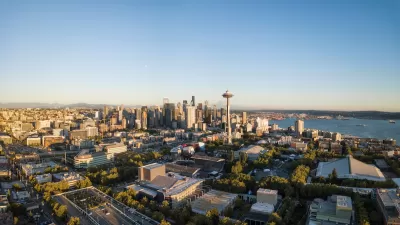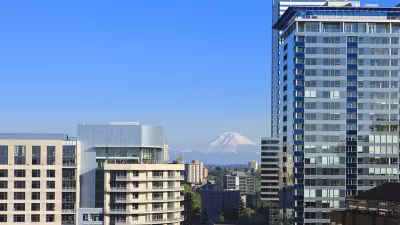A new ULI report finds that innovation in placemaking is about the inter-relatedness of health and the built environment.
Healthy places are never finished,” begins the report by ULI Northwest and ULI San Francisco. "They are continuous efforts and joint enterprises. They require smart development strategies, backed by good policies and adequate public and private investment."
By studying how the built environment affects health in San Francisco and Seattle, the group distilled their research into five major themes important for designing healthy spaces:
- Transportation
- Open spaces to eat healthy food
- Partnership with health care organizations
- Health-motivated innovation in the home and workplace
- Place-making as the key to a holistic approach
The report cites San Francisco's Dogpatch neighborhood as "an example of place-making and open spaces bringing communities together," writes ULI blogger wilheywood. The neighborhood formed the first-ever Green Benefit District (GBD), a neighborhood-controlled property tax assessment for which revenues will be used to "clean, maintain, enhance, and expand open spaces, parks, plazas, parklets, gardens, sidewalk greenings and the Public Realm in general," according to the GBD website.
In Seattle, the two-tower, mixed-used Via6 high-rise apartment, which was "designed to serve the burgeoning urban population of millenials [sic]," is another prime example of healthy place-making. It features first-floor retail and restaurants, an open mezzanine, indoor bike racks, and a bike repair service. The site has a walkability score of 100 (out of 100).
FULL STORY: Five Strategies for Promoting Healthy Lifestyles Through Improved Design of the Built Environment

Planetizen Federal Action Tracker
A weekly monitor of how Trump’s orders and actions are impacting planners and planning in America.

Maui's Vacation Rental Debate Turns Ugly
Verbal attacks, misinformation campaigns and fistfights plague a high-stakes debate to convert thousands of vacation rentals into long-term housing.

San Francisco Suspends Traffic Calming Amidst Record Deaths
Citing “a challenging fiscal landscape,” the city will cease the program on the heels of 42 traffic deaths, including 24 pedestrians.

Amtrak Rolls Out New Orleans to Alabama “Mardi Gras” Train
The new service will operate morning and evening departures between Mobile and New Orleans.

The Subversive Car-Free Guide to Trump's Great American Road Trip
Car-free ways to access Chicagoland’s best tourist attractions.

San Antonio and Austin are Fusing Into one Massive Megaregion
The region spanning the two central Texas cities is growing fast, posing challenges for local infrastructure and water supplies.
Urban Design for Planners 1: Software Tools
This six-course series explores essential urban design concepts using open source software and equips planners with the tools they need to participate fully in the urban design process.
Planning for Universal Design
Learn the tools for implementing Universal Design in planning regulations.
Heyer Gruel & Associates PA
JM Goldson LLC
Custer County Colorado
City of Camden Redevelopment Agency
City of Astoria
Transportation Research & Education Center (TREC) at Portland State University
Jefferson Parish Government
Camden Redevelopment Agency
City of Claremont





























